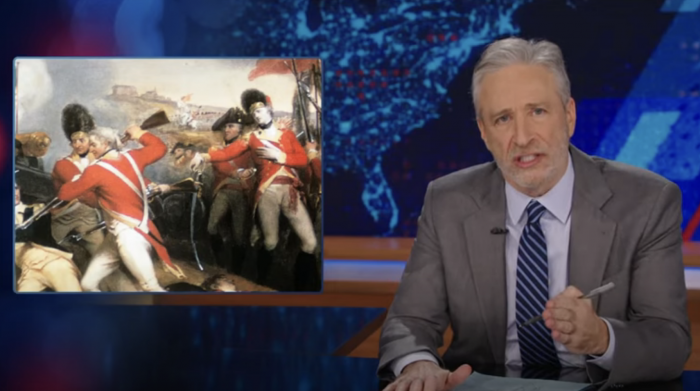

Deconstructing the First Six Scenes of Every Episode of "Castle"
By Dustin Rowles | TV | November 11, 2010 |
By Dustin Rowles | TV | November 11, 2010 |
Like a lot of folks determined to watch any and everything that Nathan Fillion has ever been involved in, out of simple loyalty to “Firefly” (and in my case, Waitress), I tune in weekly to “Castle,” a mediocre police procedural on ABC. Premise-wise, it’s not unlike most procedurals, except for the one twist: Fillion plays Richard Castle, a mystery novelist, who uses his mystery novel expertise — whatever that is — to help his detective partner, Kate Beckett (Stana Katic) — who also doubles as the inspiration for his ongoing series of novels — solve homicide investigations.
Story-wise, it’s not that great, and usually fairly predictable. But nobody watches “Castle” for great mysteries — they watch it for the effortless chemistry between Fillion and Katic, who also gets to occasionally wear revealing clothing. We also watch it because Molly Quinn, who plays Castle’s daughter, is precociously adorable.
But after watching the show for two-plus seasons, the formula has become increasingly stale. It is now officially to the point that the same six scenes open every episode of the show. “Law & Order” over its 20-year history also had a predictable opening, but even after 20 years, it never got as rote as “Castle.”
So, I ask you: The next time you watch “Castle,” or if you decide to re-watch some older episodes, watch for this pattern, because — save for the occasional sweeps-week episode or season openers — it’s practically beat for beat.
Scene 1) Someone stumbles upon a dead body.
Scene 2) Richard Castle is at home, bantering with his family. This is where the three (occasionally four) scene family subplot develops. It’s introduced in this scene, but is always interrupted by a phone call from Kate with news of a murder.
Scene 3) Without fail, the third scene is always the murder scene, where Castle and Kate show up and discuss preliminary details with Lainie — the medical examiner — who always has a wisecrack. Time of death is established, and referred to on several occasions over the course of the episode. I would love to interview a forensics person someday to ask whether time of death can be established with the exactitude that these forensics experts provide in procedurals because almost every episode hinges on this TOD.
Scene 4) This is where Castle and Kate meet with Espito and Ryan — who do all the grunt work for Kate — and develop an initial theory. Captain Montgomery will likely stick his head out here and provide some guidance.
Scene 5) Occasionally, this scene will happen later in the episode, but it almost always happens here: Castle and Kate meet with Lanie again, this time in her lab to go over the coroner’s report and further develop theory, expanding on the time of death established in the third scene.
Scene 6) Either investigate the victim’s home or interview the victim’s closest family member or girlfriend/boyfriend. This person will be immediately dismissed, but the answer to the question, “Did your loved one have any enemies that you knew about?” or “Did anything strange happen on the day your loved one died?” elicits the second clue.
The scene-for-scene episode construction usually wavers slightly from here, but overall, the mystery follows a familiar pattern. The first suspect is always alibi’d out by Espisito and Ryan. The second theory and suspect usually has a very quick dead end (although, it is often this suspect who ends up being the killer). The third theory and suspect is then developed over the entire middle-half of the show, but that suspect is always dismissed, as well.
However, the investigation of the third suspect leads them to a fourth suspect, who Kate and Richard almost always assume is the killer. However, the fourth suspect almost never is. Yet, one of the earlier dismissed suspects almost invariably can be tied to the innocent fourth suspect (this connection is often inspired by a conversation that Castle has with his daughter), and the person associated with the fourth suspect is fingered as the real murderer. However, in some cases, the real murderer is a close, heretofore not suspected associate of the fourth suspect (a client, a right hand man, a lawyer, an employee, or a spouse), who committed the murder without the fourth suspect’s knowledge. The fourth suspect finds this out during an interrogation. And anguished, “Why? How could you?” follows.
Then, each episode ends with Castle wrapping up the family subplot, and either making amends with his daughter or the talking over the resolution to a problem that his mother had. Hugs are shared.
← The 2011 Academy Award Nominations | Dirty, Dirty Puppets | Cameron Diaz Offered The Happytime Murders →
More Like This
Jon Stewart Forcefully Makes the Case Against the Former President's Patriotism
'The Gentlemen' Is a Blast for Fans of Guy Ritchie's Formula
One Of The Stars Of 'The Hangover' Is Joining 'Only Murders In The Building'
A Legendary Horror Franchise Is Headed To Television
Trying To Make it Through the Oscars

Jon Stewart Forcefully Makes the Case Against the Former President's Patriotism
Is The Royal Family Trying to Make It Look Like Kate Middleton’s Dead?
What’s Old Is New Again: Old Hollywood Glamour Glitters at the 2024 Oscars
Al Pacino Presents Best Picture Oscar, Confuses Everyone
The Dangerous Lie Of 'TradWives'
A Legendary Horror Franchise Is Headed To Television
More Like This
Jon Stewart Forcefully Makes the Case Against the Former President's Patriotism
'The Gentlemen' Is a Blast for Fans of Guy Ritchie's Formula
One Of The Stars Of 'The Hangover' Is Joining 'Only Murders In The Building'
A Legendary Horror Franchise Is Headed To Television
Trying To Make it Through the Oscars
Reviews